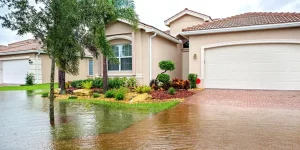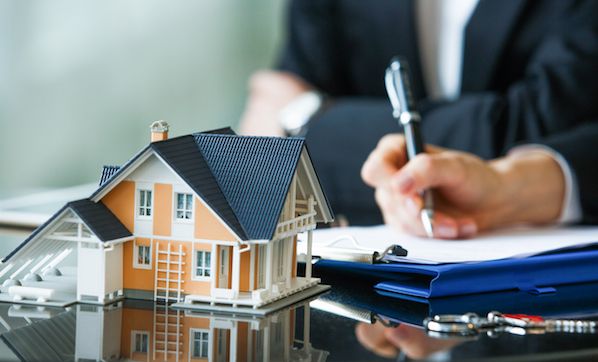Enhancing home safety against floods is crucial for homeowners, particularly in areas prone to flooding. Knowing how to build flood-resistant homes involves strategic remodeling techniques such as elevating electrical systems and using flood-resistant materials to significantly reduce the risk of flood damage. Implementing effective drainage solutions and committing to regular maintenance also play vital roles in ensuring long-term protection. These tips not only boost home safety but also offer peace of mind to homeowners facing potential flood hazards, allowing them to feel secure in their living environments.
Key Takeaways
- Elevate electrical systems to prevent water damage.
- Use flood-resistant materials like concrete and metal.
- Implement effective drainage solutions like French drains.
- Regularly maintain gutters and downspouts for proper water management.
- Check and maintain waterproof seals for long-term effectiveness.
Understanding Flood Risks
Understanding the different types and levels of flood risks is essential when considering how to construct flood-resistant homes. Factors such as proximity to bodies of water, elevation, historical flood data, and local drainage systems all play a role in evaluating the potential risks a property may face.
Key Elements of Flood-Resistant Design
When developing flood-resistant design strategies for homes, meticulous attention to detail and adherence to technical standards are essential components in ensuring the structural integrity and safety of the property.
Key elements include:
- Elevating electrical systems above potential flood levels
- Incorporating proper drainage systems
- Utilizing flood-resistant building materials
- Ensuring airtight construction to prevent water infiltration
These elements collectively contribute to a robust flood-resistant design.

Best Materials for Flood-Proofing
In flood-resistant design, selecting the appropriate materials is paramount to fortifying homes against potential water damage and ensuring long-term structural resilience. Opt for materials such as concrete, brick, metal, and pressure-treated wood for their durability and water-resistant properties. Additionally, using waterproof sealants, corrosion-resistant fasteners, and moisture-resistant insulation can further enhance the flood-proofing capabilities of a home, safeguarding it against water intrusion.
Effective Drainage Solutions
Proper implementation of efficient drainage solutions is pivotal in mitigating flood risks and maintaining the structural integrity of homes in flood-prone areas. Installing French drains, ensuring proper grading away from the foundation, and using permeable paving can all contribute to effective water management. Additionally, regular maintenance of gutters and downspouts is vital to prevent water buildup around the property, reducing the likelihood of flooding incidents.
Maintenance Tips for Long-Term Protection
To maintain the long-term protection of flood-resistant homes, diligent maintenance practices are essential in upholding the integrity of the implemented flood mitigation strategies. Regularly inspecting and maintaining flood barriers, waterproof seals, and drainage systems is vital. Clearing debris from gutters, ensuring sump pumps are operational, and fixing any cracks or leaks promptly are necessary tasks for ensuring the continued effectiveness of flood-resistant measures.
Frequently Asked Questions
Can Landscaping Choices Affect a Home’s Flood Resistance?
Landscaping choices can greatly impact a home’s flood resistance. Proper grading, strategic plant selection, and implementing rain gardens can help mitigate water flow, reduce erosion, and enhance overall flood resilience, ensuring a safer living environment.
How Can Homeowners Assess Their Property’s Flood Risk?
Homeowners can assess their property’s flood risk by consulting FEMA flood maps, hiring a professional surveyor to evaluate elevation levels, inspecting drainage systems, and considering past flooding incidents in the area. Taking these steps can inform flood-resistant home improvements.
Are There Specialized Flood-Resistant Windows Available?
Specialized flood-resistant windows are available on the market. These windows are designed to withstand high water pressure and prevent water infiltration during floods. They provide an extra layer of protection for homes in flood-prone areas.
What Role Do Sump Pumps Play in Flood-Proofing a Home?
Sump pumps are essential components in flood-proofing homes. These devices efficiently remove excess water from basements or lower levels, preventing flooding and water damage. Properly installed and maintained sump pumps can greatly reduce the risk of water-related disasters.
How Can Homeowners Ensure Their Electrical Systems Are Flood-Resistant?
To guarantee flood-resistant electrical systems, homeowners should elevate electrical components above potential flood levels, use water-resistant materials for outlets and wiring, install a main power cutoff switch, and consider hiring a professional electrician for proper installation and maintenance.
Conclusion
To sum up, creating flood-resistant homes requires a combination of strategic design elements, appropriate materials, and proactive maintenance. By elevating electrical systems, using flood-resistant materials, implementing effective drainage solutions, and regularly maintaining these features, homeowners can notably reduce their vulnerability to flood damage. Prioritizing these remodeling tips can enhance home safety and resilience against floods, ultimately protecting both property and occupants from potential harm.
You May Also Like To Read:


